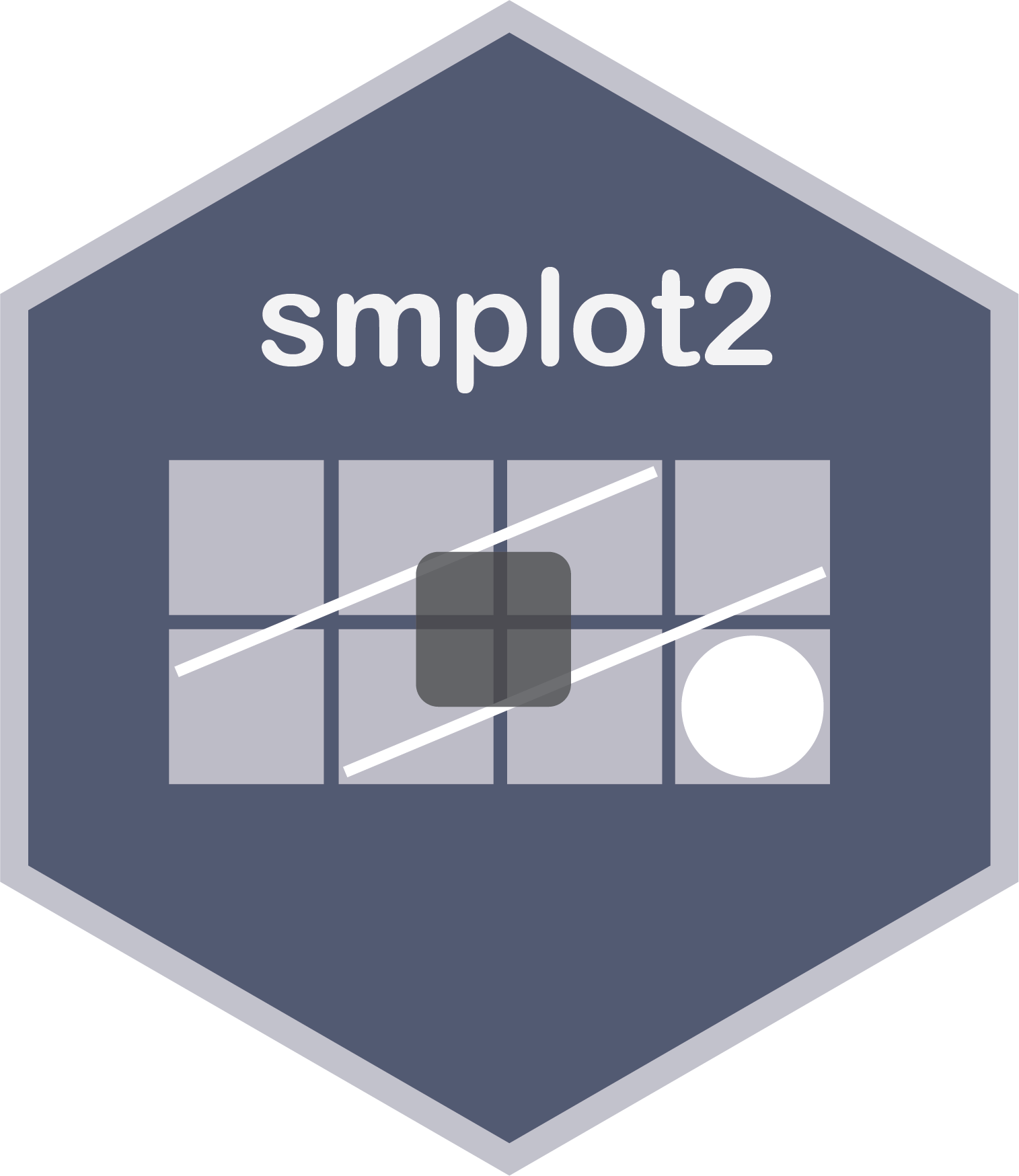Chapter 1 Opening Remarks & News

smplot2’s key contributions are shortcut functions that generate elegant plots, which are aesthetically appropriate for the format of scientific journals, and key functions that can create and annotate a composite figure (subplotting), the latter of which is described in Chapter 7 in detail.
1.1 Which sections to read
If you are a newcomer, I recommend that you start reading from Chapter 2.
If you are a proficient R user, I suggest that you read Chapters 7 (sections 7.4-7.7), 11 and 12 because all other sections describe basics of R as well.
Chapters 8-10 describe some introductory topics of data analysis that I ask my students to learn. They are not about data visualization per se.
1.2 How to use this guide
With more than 300 examples, this documentation guide serves as a “gallery” of plots that can be generated with smplot2.
CTRL + F is your friend! No need to linearly read this guide from cover-to-cover. You can save your time by searching for the key word or function’s name of your interest, reading its description, finding some examples that you like, and then using them for your own data. This might be the best way to get familiarized with the functions of smplot2.
1.3 News
## [1] '0.2.4'2024-06-24: Version 0.2.4
sm_pointplot()now also hasforgetargument. So, examples in Chapter 5.3.4 have been modified (or fixed).
2024-05-29: Version 0.2.3
Both \(R\) and \(R^2\) can be computed with
sm_statCorr().wRatio,wRatio2,hRatio,hRatio2andtickRatioofsm_put_together()are adjusted automatically unless users supply their own inputs.Defaults of visualization functions are now kept even when users call upon
list()for each argument unless users directly replace them with another input value. For example, to change the transparency of the bar and keep the defaults ofsm_bar(), users can only re-specify the alpha value as shown below (p2plot).To forget the defaults for a plot component (ex. bar) when
list()is called, setforget = TRUE, and the visualization functions will work the same as before the version update (p3plot).
ggplot(data = df, mapping = aes(x = Day, y = Value, color = Day)) +
sm_bar() +
scale_color_manual(values = sm_color("blue", "orange")) +
ggtitle("Bar's default in smplot2") -> p1
# In the previous versions of smplot2, needed to write:
# bar.params = list(alpha = 0.5, width = 0.7, color = 'transparent', fill = 'gray80')
ggplot(data = df, mapping = aes(x = Day, y = Value, color = Day)) +
sm_bar(bar.params = list(alpha = 0.3)) + # forget = FALSE (default)
scale_color_manual(values = sm_color("blue", "orange")) +
ggtitle("Bar's default with new alpha") -> p2
# When forget = TRUE, forgets defaults of a plotting feature (ex. bar) when list() is called as in the previous versions.
ggplot(data = df, mapping = aes(x = Day, y = Value, color = Day)) +
sm_bar(bar.params = list(), forget = TRUE) +
scale_color_manual(values = sm_color("blue", "orange")) +
ggtitle("Bar's default forgotten") -> p3
sm_put_together(list(p1, p2, p3), ncol = 3, nrow = 1, tickRatio = 1)